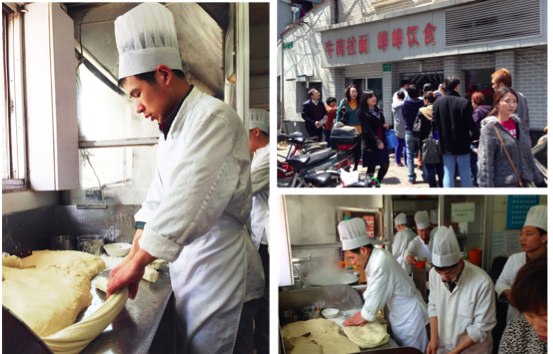Following years of sharp increases to wages and real estate prices, has China become too expensive? To answer this question, Andy Rothman, Investment Strategist at Matthews Asia, makes a proposition: start with lunch.
“I recently moved to San Francisco to join Matthews Asia after living in China for more than 20 years. So when I made my first trip back to Shanghai in April, I was eager to visit my favorite neighborhood noodle joint, a short walk from my house there.
I had been experiencing a bit of sticker shock in the U.S. so it was comforting to find that a fantastic (and large) bowl of beef noodle soup still cost only about US$1.50 (9 renminbi). Keep in mind, this is a fairly labor-intensive meal—the beef is stewed with the broth and simmered for hours, and the hand-pulled noodles are made right there in the middle of the small restaurant. There’s no way to find a bargain like that in any part of San Francisco.
But what can a visit to a noodle shop tell us about the macroeconomy? Well, the restaurant’s beloved bowls of beef noodle soup are not products traded internationally and, therefore, the cost should be driven to a significant degree by wages in the domestic economy”.
Chinese exporters are also managing to deal with higher costs, both by improving productivity and by moving up the value chain. This is evident from the rising share of U.S. imports from China. Since the end of 2004, the renminbi (RMB) has appreciated by 41% in real effective terms, and the minimum wage in Dongguan (a key export-processing center in southern China) rose by 196%. What has been the impact on the competiveness of Chinese exports? In 2004, Chinese goods accounted for about 13% of all products imported to the U.S. (while Mexico’s share was about 10.5%). Despite sharp increases in wages and in fuel costs, as well as the benefits of the North American Free Trade Agreement, China remains competitive today, even compared to Mexico. Last year, China’s share of U.S. imports for goods rose to about 19%, while Mexico’s share was about 12%.
“China is no longer the cheapest place to manufacture such items as shoes, toys and textiles, but it remains competitive for higher value-added machinery . . . and of course, there are those delectable hand-pulled noodles.”

